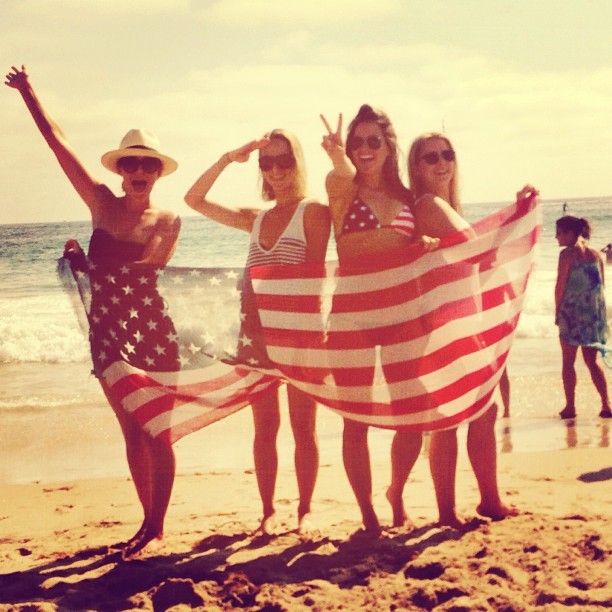Summer: Best season ever. You’ve got awesome weather, weddings galore, block parties, summer Fridays (summer Alldays?), and the love/hate relationship you have with food/drinking and the gym is at its peak.
For Pilipino-Americans, you’ve also got Independence Days: June 12th and July 4th.
Personally, I don’t really think of myself as much of a flag waver for either country that I call home. In my younger years, I repped the Philippines hardcore while also trying to assimilate into a new culture when my family immigrated to this country. Now in my late- (ouch) twenties, I’ve realized some interesting things about how these two holidays are celebrated here in the States.
When I think of Philippine Independence Day, I think of the following: a jam-packed parade along Madison Avenue lined with kiosks of ulam and halo-halo; the smell of barbeque wafting from the ihawan; titos and titas marching in matching shirts and facetowel capes that unintentionally make them look like union workers on strike; young beauty pageant queens with their make-up melting on their face as they sashay in their ternos and tiaras; and a bunch of teenagers strolling around in packs.
When I think of Fourth of July, I think of red, white, and blue tank-tops and cut-offs patterned with stars and stripes. I think of beach barbecues, backyard beer pong games, and fireworks. I think of popsicle sticks, ice cream, and swimming pools. It’s truly a holiday - so much so that it gives you a great conversation piece to kill time at work for a full week when you return to the office: “Hey Joe. How was your Fourth?”
Pilipinos see Independence Day as a day to celebrate their heritage and Pilipino pride. They bring out their barongs, go to church and attend masses said in Tagalog, and eat. They eat. Did I already say they eat? I do think there might be a little bit of confusion as to what exactly is being celebrated. Technically, it’s independence from Spain - yet, on a day when we’re supposed to be celebrating what is truly Pilipino, what is truly Pilipino anyway? Much of what we regard as cultural staples either are or have been influenced by other nations. On this day, we all of a sudden revere a nation that many of its people have left and continue to leave in order to pursue a better life. It almost makes one wonder if we here in the States might actually be celebrating independence from the Philippines - a reminder that we can still be Pilipino albeit without the figurative cage of what it is to actually live in the Philippines.
On the flipside, the Fourth of July is exactly just that: the Fourth of July. It’s a date on a calendar. Yes - it’s the day that the Declaration of Independence was adopted which granted independence from Great Britain, but since the very first Fourth of July I ever celebrated, it has always been a social event - never a commemorative one. I get it though - it’s difficult to celebrate independence of a nation that instills a spirit of power and pride among its people. A nation so independent that it utilizes its servicemen to ensure that other countries maintain their own independence and peace. America is certainly seen by many throughout the world as the best and most powerful country, no? So when you’re the “biggest and the best” (emphasis on the quotes) and you’ve never really felt the burn of being anything other than that, there’s really no independence to be celebrated. And so we plan our road trips and weekends at the Jersey shore, we fire up the grill, and drink to our hearts’ contentment and our livers’ capacity ... all in the name of celebrating our country’s independence.
Times change and maybe instead of calling these days “Independence Days,” they should just be “Philippine Day” or “America Day.” I think it’s not so much independence that should be celebrated, but rather what reminds you that you are a Pilipino; what reminds you that you are an American.
With that said, moving forward, I will now be celebrating these two days at the gym with my non-existent gym membership. Because all the drinking and eating I’m doing around these holidays are ultimately what remind me that I am a Pilipino-American.
Photo credits: NYC <3 NYC, Day-images







